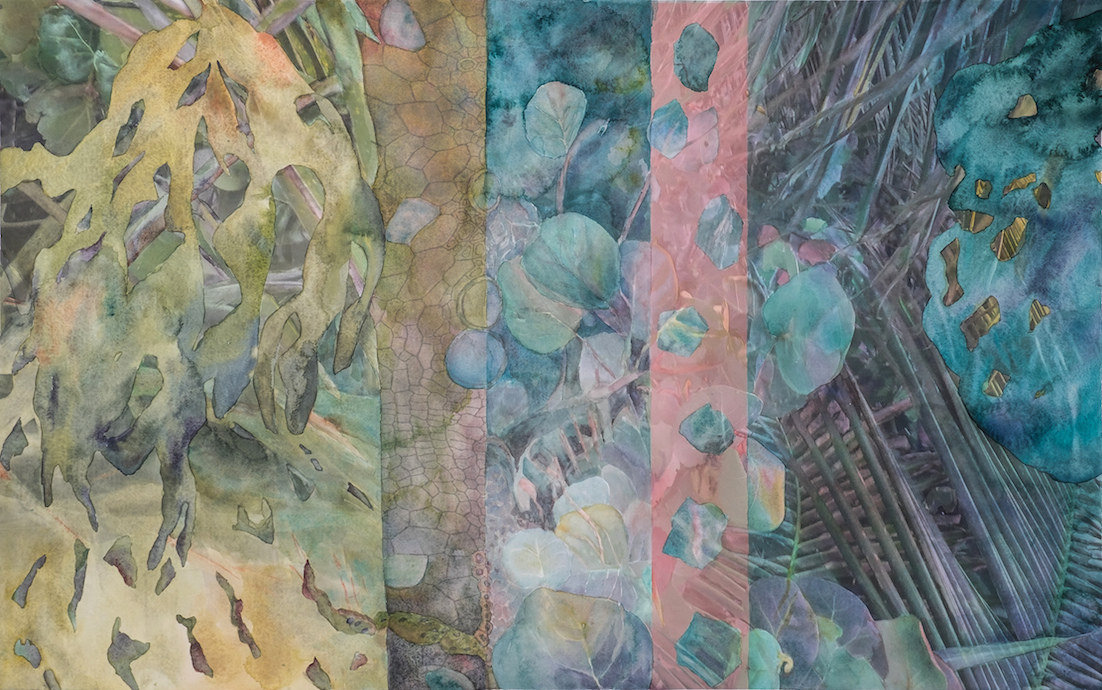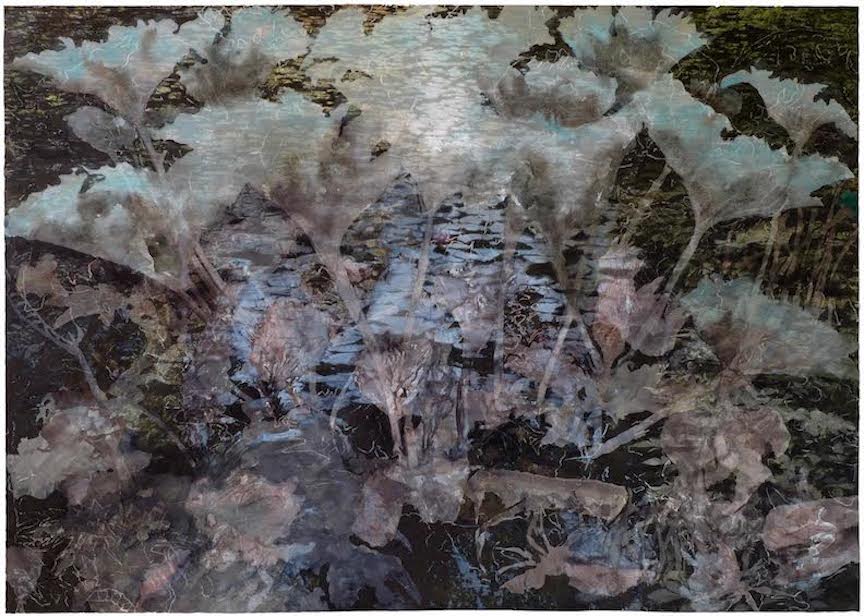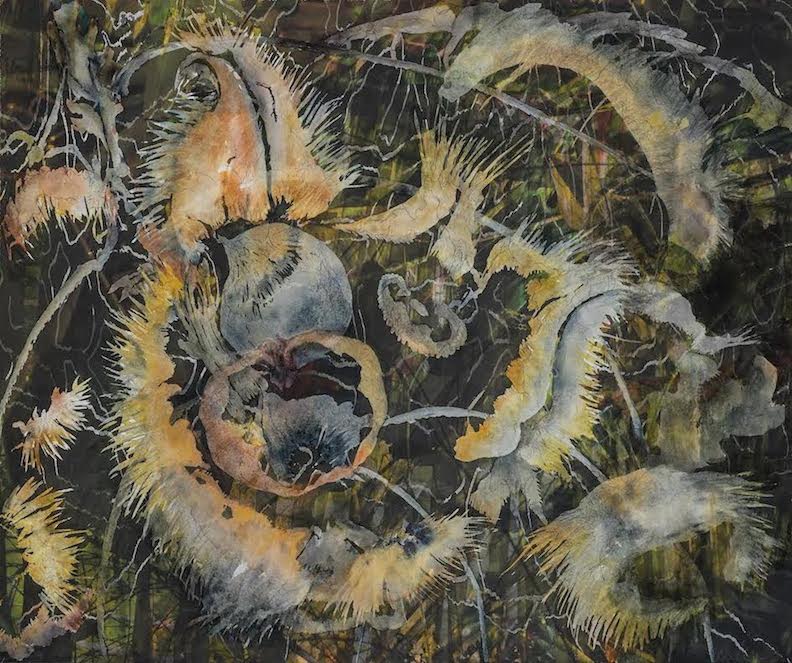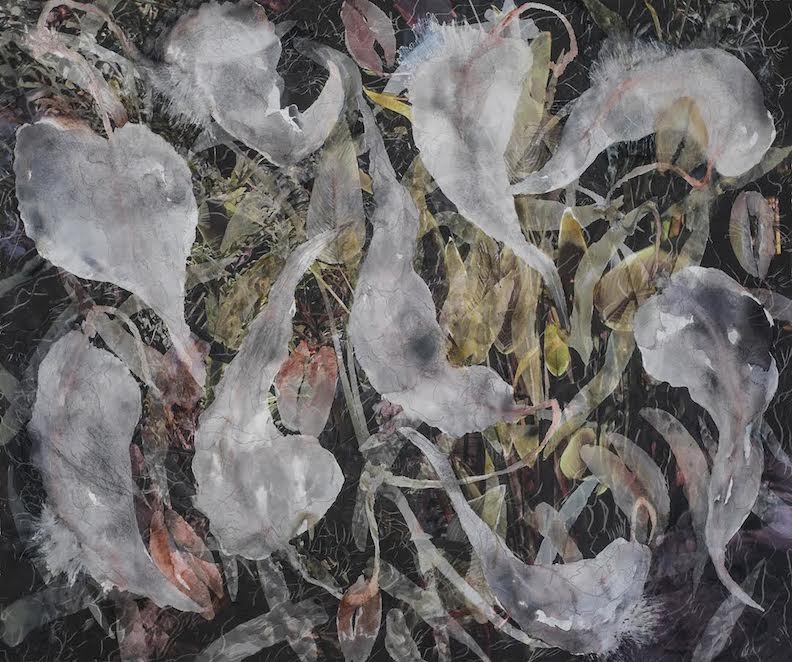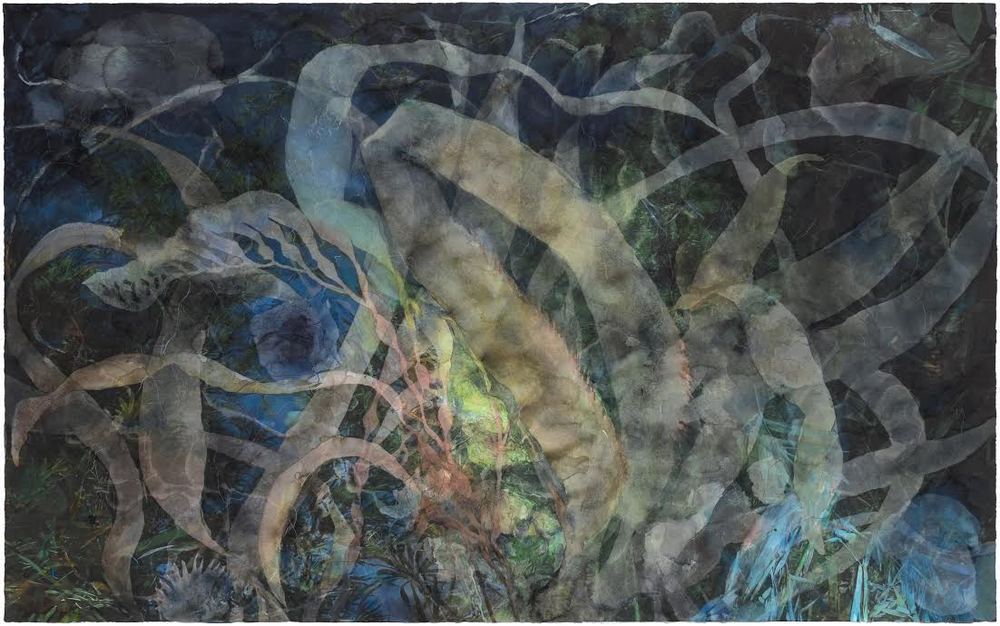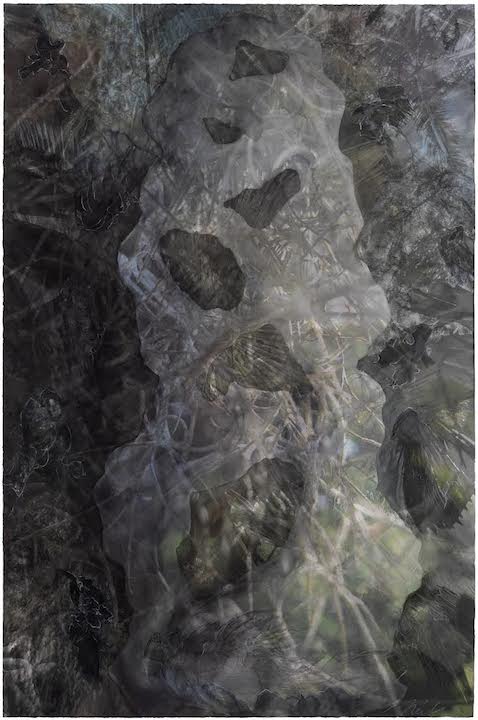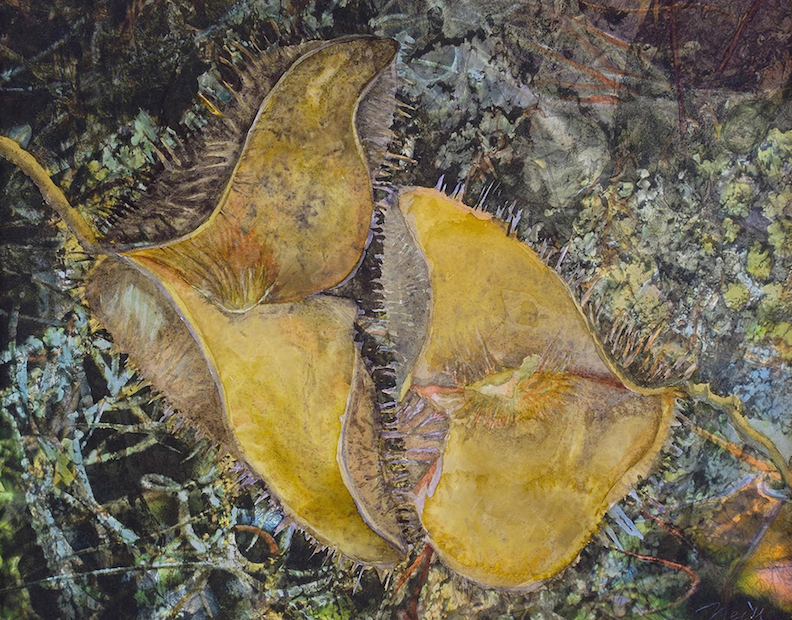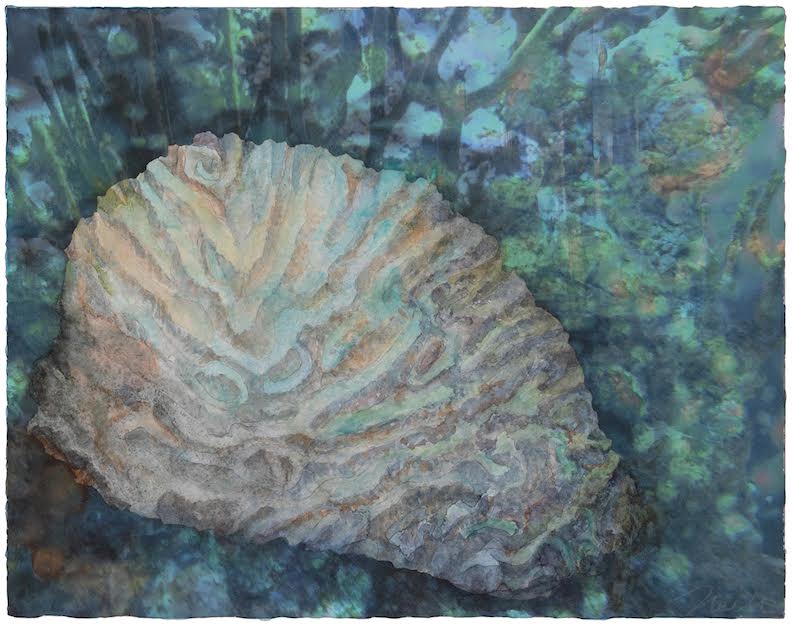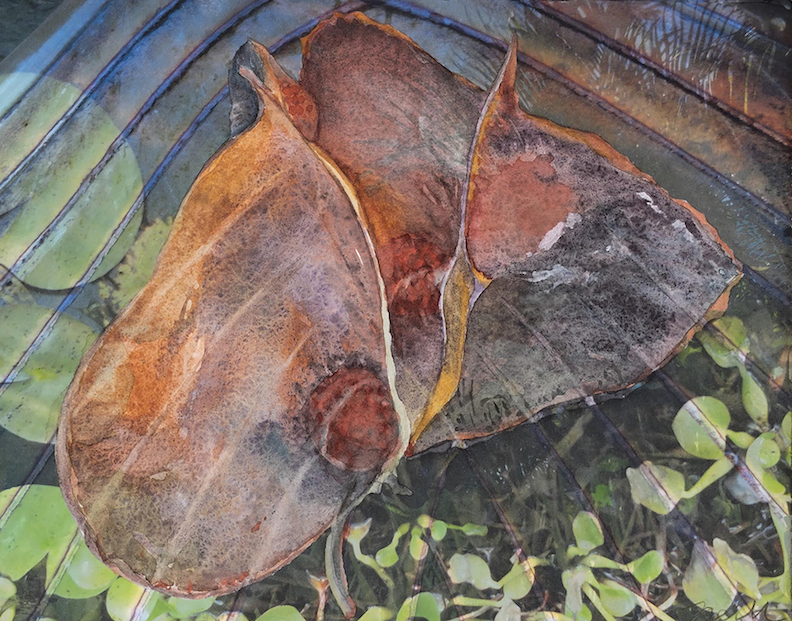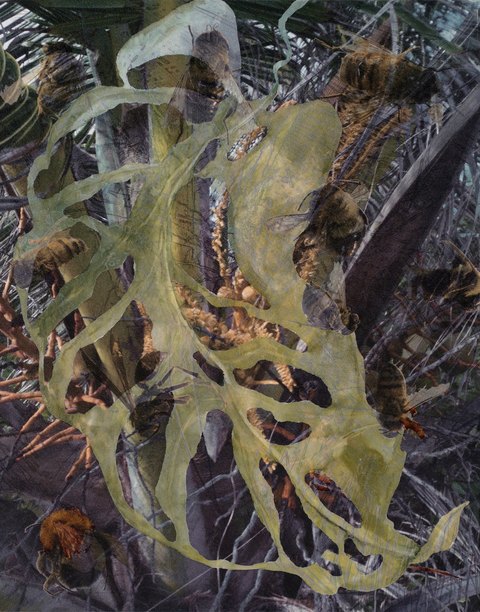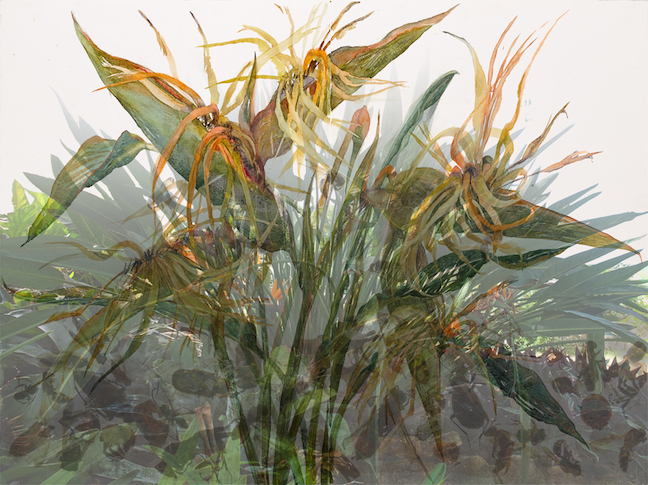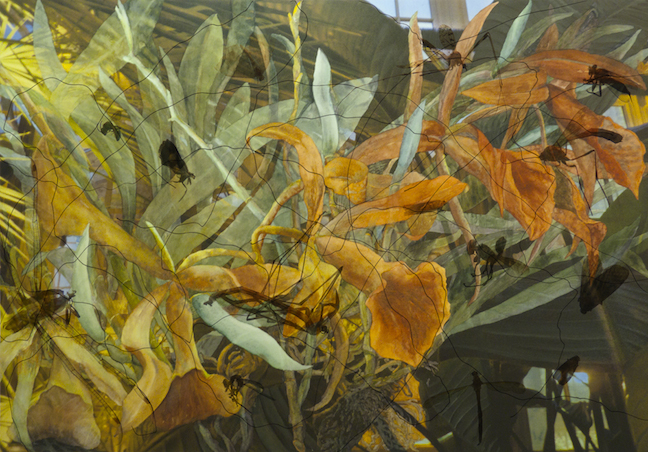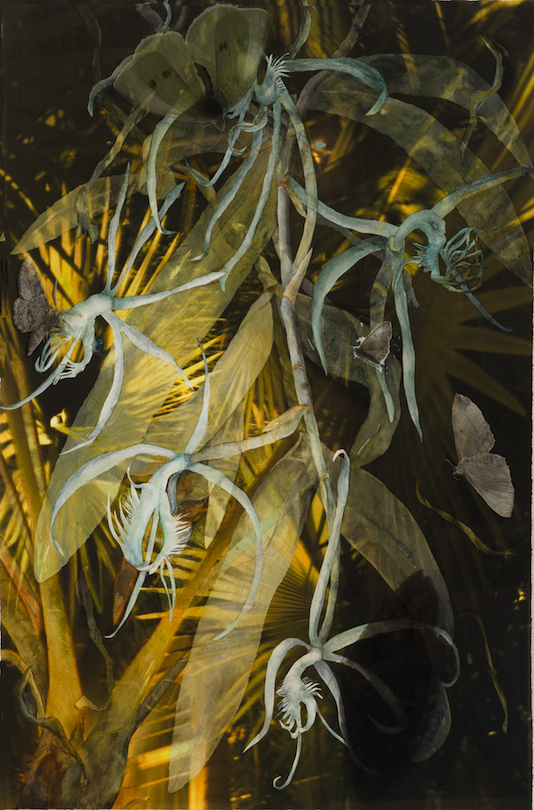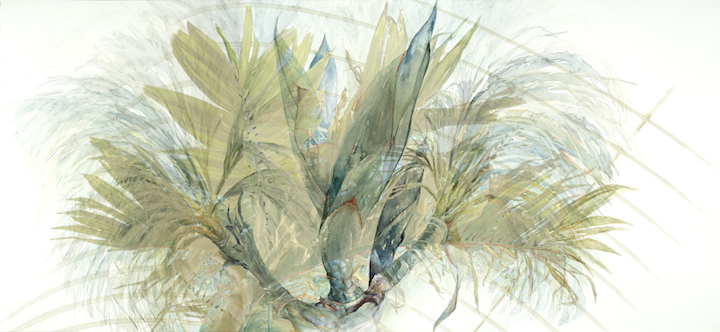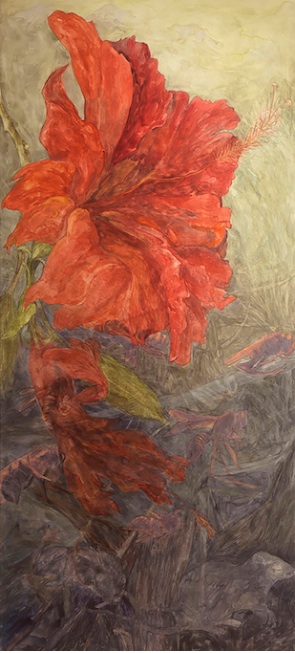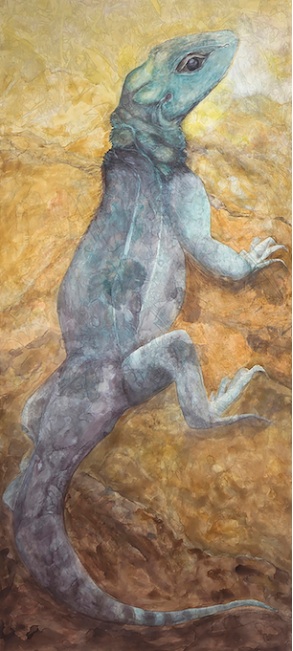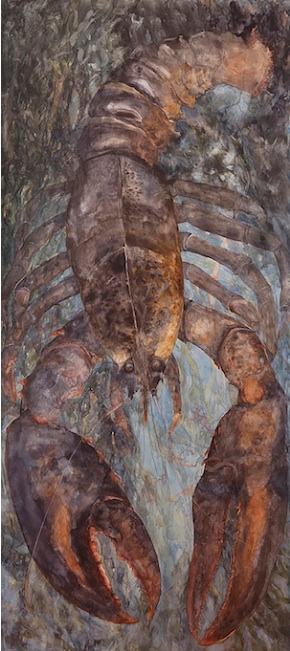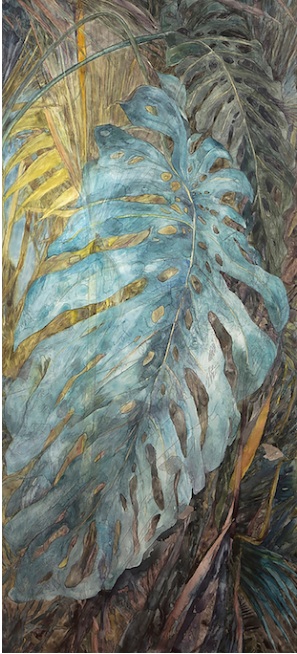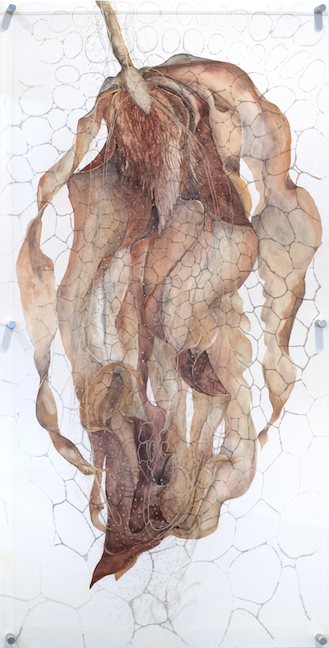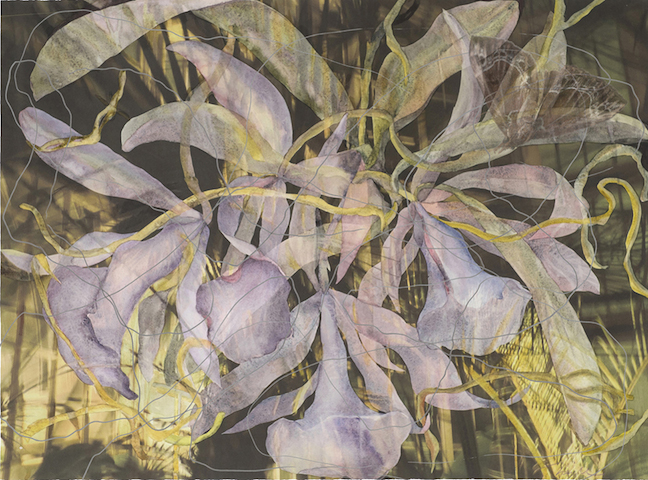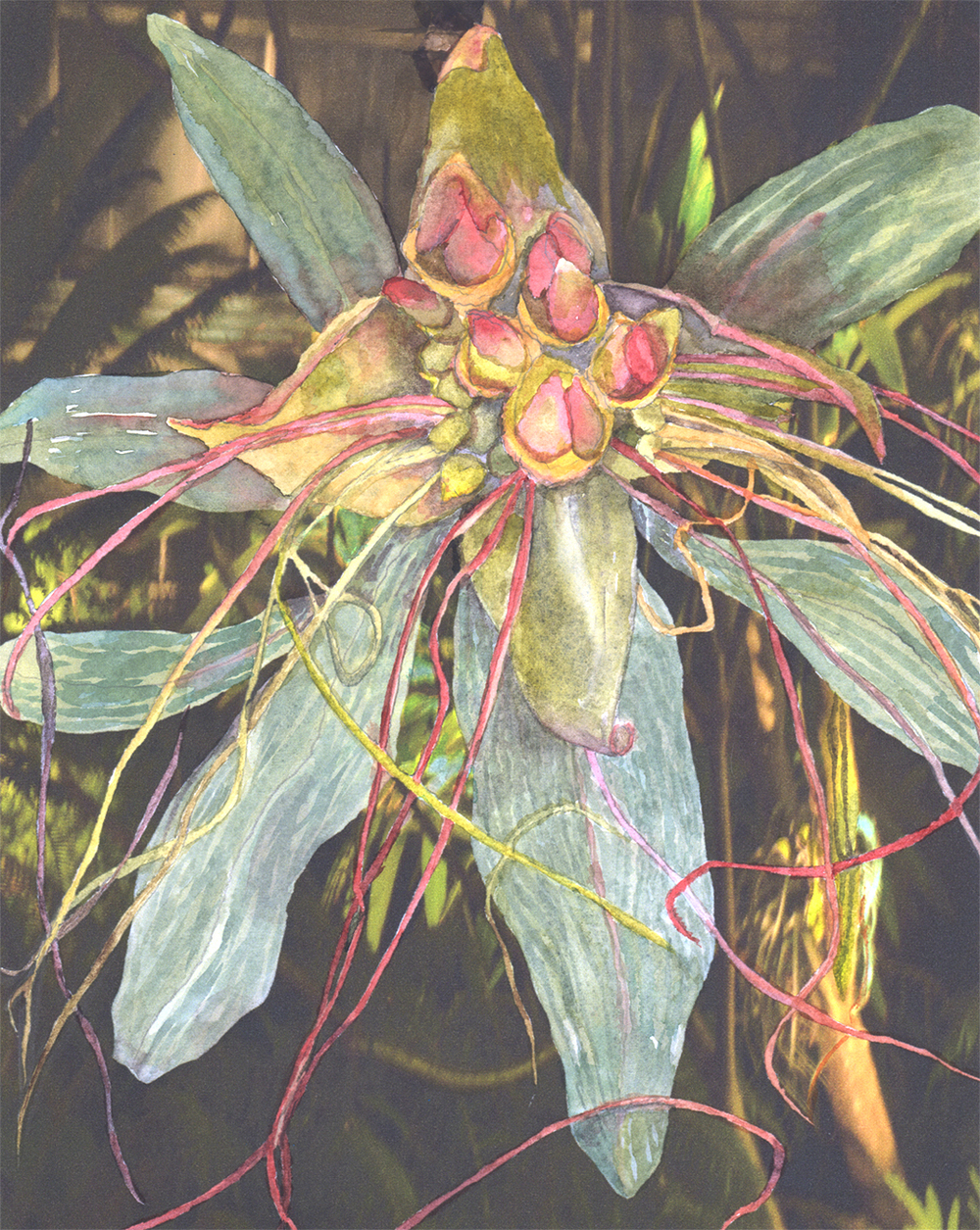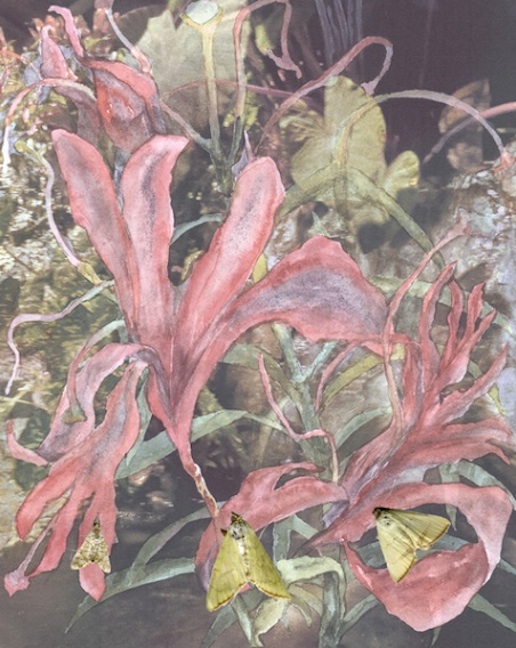Click for larger images
Mixed Media Paintings 2016-2012
Just Weeds, 2014-15, Watercolor and archival ink jet print on paper, 30" x 47.5"
While the label weed has negative implications it may simply refer to a wild plant growing in the wrong place some of which become desirable when intentionally cultivated. Many weeds are in fact beneficial, having nutritional and medicinal properties or proving crucial to the survival of insects and flora in a specific habitat. Thistles, a large family of plants with many desirous as well as noxious characteristics, were the incentive for this painting.
Morphology, Canna Case, 2015, Watercolor, pencil, archival inkjet on paper, 30" x 36"
Morphology is the biological study of the forms and structural relationships of living organisms. Explored here are the similarities and differences between parts of a canna plant and milkweed. Dualities are presented as symmetry through repetition or shadow.
Philo & Palm with a 1000 Bees 2014, Watercolor & Archival Ink Jet Print on Clayboard, 14” x 11”
Bees, attracted by lush environments, are declining due to multiple risks causing die-off of the hives worker bees, including are increasing uses of pesticides, viruses, and loss of habitats. Significant economic losses may result because bees depended on to pollinate agricultural crops.
The Other Side of Paradise, 2013, Watercolor & Archival Digital Print on Paper and Plexiglas, 31" x 44"
The stalks and blossoming pods of Strelizia reganie, commonly known as Bird of Paradise,
were painted in watercolor and a photo of the leaves and ground was printed onto the painting. Often ignored is the plant’s understory in which the crawling creatures and decay exist, essential to the organisms well being. These are depicted on the framing Plexiglas.
were painted in watercolor and a photo of the leaves and ground was printed onto the painting. Often ignored is the plant’s understory in which the crawling creatures and decay exist, essential to the organisms well being. These are depicted on the framing Plexiglas.
Night Wings, 2013, Watercolor & Archival Digital Images on Paper and Plexiglas, 30” x 43”
Many plants are night bloomers and scented only at night. Therefore, species of insects adapting their habits are nocturnal feeders and pollinators. They and their fight lines have been printed onto the framing Plexiglas.
Unbalanced Nature, 2013-14, Watercolor on Aquaboard Panels & Archival Ink-Jet Print, 5 panels, each 66 x 30 inches
The effects of invasive and endangered species on human life and the consequences to the earth’s habitat underlie all of Neill’s images. The artist credits her commitment to environmental conservation to early studies of biology at Skidmore College. It was a natural transition from the examination of biological processes in a lab to metaphorically visualizing those processes as imagery in paintings and prints.
Bloom, 2013-14, Watercolor on Aquabord Panels & Archival Ink-Jet Print, 66 x 30 Inches
Flower: Well-meaning human decisions are often credited with introducing invasive species. Pictured are species that were imported to tropical islands to solve agricultural problems but ran amuck because their habits were imperfectly understood: yellow jackets to rid hibiscus flowers of white mites that they don’t eat; mongoose that were brought into cane fields to attack rats, which are nocturnal while mongoose are diurnal.
Leaf, 2013, Watercolor on Aquaboard Panels & Archival Ink-Jet Print, 66 x 30 inches
Leaf: There is evidence that leafy plants ameliorate the effects of climate change through their dispersal of moisture into the air. It’s theorized that an increase in trees and broad leafed plants could create cloud layers, which would shield the earth from harmful sunrays
Pods, 2013-14, Watercolor on Aquaboard Panels & Archival Ink-Jet Print, 66 x 30"
Pod: Invasive Asian Water Chestnuts (inedible), painted in watercolor, are precariously stacked against a digitally printed ground of harmful giant hogweed and caterpillar tents. All are surrounded by drawings of choking Golden Dodder.
Pendant Magnolia, 2012, Watercolor & Archival Ink Jet Print on Paper & Plexiglas, 60" x 30"
A dissected view of a magnolia blossom was painted in watercolor against a detail of plant cell structures. The entire cell structure was printed on the interior surface of the Plexiglas Echoing the form of the dissected blossom. The two panels are attached to the wall with stainless standoff mounts. I researched the cell forms in a plant anatomy book.
Ames’ Orchids, 2012, Watercolor & Archival Ink Jet Print on Paper & Plexiglas, 21.5" x 29"
This orchid dispenses a scent at night, which attracts moths that will fertilize the blooms. The painted orchids were surrounded with a night photo of its natural environment. Moths and their fight line have been printed onto the framing Plexiglas. It is a tribute to Oakes Ames, an early 20c botanist specializing in orchids and his wife, Blanche Ames, a botanical artist.
